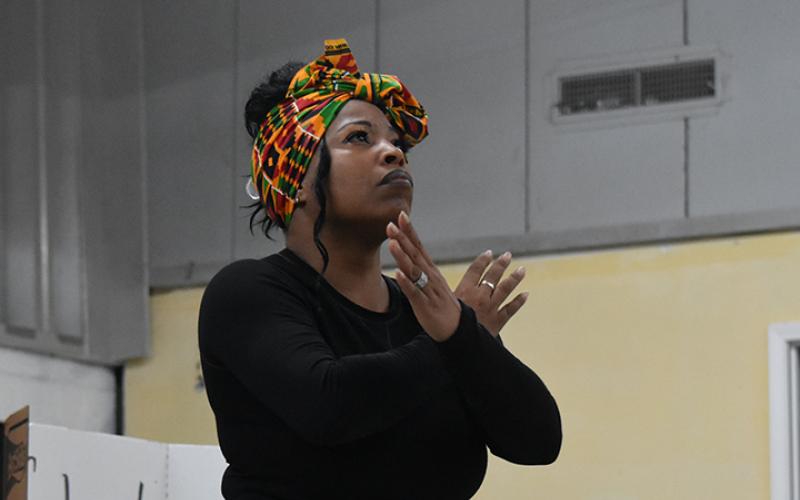Texana – As guests entered the Texana Community Center on March 7 and started looking at decorations around the room, they saw some of the reasons they were there – including words of hate.
“These are words that were often used and are still used today,” Camden Johnson, executive director of One Dozen Who Care, said as she opened the organization’s first black history event, Artistic Expression Through Black Culture.
The aim was to share African-American history with the community through the arts. The event was organized into three eras – slavery to 1960s, 1960s-90s and 1990s-present.
It opened with Mount Zion Baptist Church singing “Ride Out the Storm.” Dawn Colbert of One Dozen Who Care said hymns sang during slavery often shared messages of the community’s plans.
“The church is the community,” she said. “The church is the foundation of everything.”
Michelle Lloyd performed a dance to “Glory” by Common and John Legend. It was explained that all slaves wanted to was get to glory.
The era concluded with the Rev. Bruce Oliver reading Martin Luther King Jr.’s “I Have a Dream” speech after giving a small speech of his own about it.
“The dream was for us to become dreamers,” Oliver said. “I thank him for having that vision.”
The 1960s-90s featured Fort Hembree Baptist Church singing “I Go to the Rock” and “Sign Me Up,” as well as Colbert reading Maya Angelou’s poem “And Still I Rise.”
A highlight during the segment was three children reprising their performances as historic figures that they originally did for the Waynesville Missionary Baptist Association’s black history program.
“It’s always good for them to know more about our African-American leaders besides Martin Luther King Jr.,” Johnson said. “Our youth is our future. That’s a big deal.”
Roman Blount was Thurgood Marshall, the first African-American justice of the U.S. Supreme Court. Elizabeth Crawford was Dr. Mamie Phipps Clark, the social psychologist whose studies on preschool children’s perception of black and white dolls was used to show the damaging effects of segregation in the Brown vs. Board of Education case.
Her twin brother, Elijah Crawford, was Dr. Charles Drew, known as the father of blood banking.
In the 1990s, the music changed. Colbert and Farrah Eller of Messengers of Christ sang “The Anthem” and “Awesome” for the audience. Johnson also took the stage to read one of her own poems, “My Black is Beautiful.” The event concluded with another dance performance by Lloyd to “Rise Up.”
Johnson said she was happy with the turnout for the event. She plans for it to be bigger next year, as she already has fraternities and sororities from Western Carolina University interested in participating. The event was funded through a grassroots grant from the N.C. Arts Council and Cherokee County Arts Council.
Image
Body

